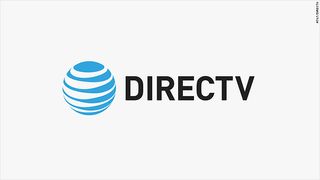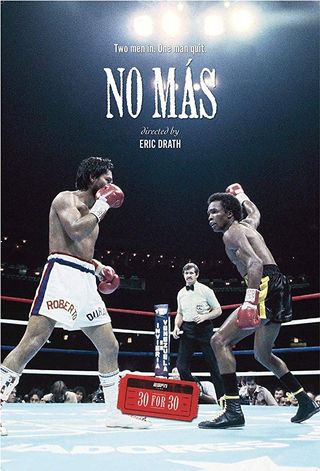AT&T: No Mas
With the deterioration of its satellite business accelerating and competition on the streaming front heating up, MoffettNathanson principal and senior analyst Craig Moffett threw in the virtual towel for AT&T Tuesday (Nov. 19), downgrading the stock to “sell” from “neutral” and calling its pay TV business, “a cancer.”
The unsurprising result has been a sharp drop in AT&T’s stock price -- it was down 6.2% between Nov. 18 and Nov. 20. The stock was up about 1% in early trading Nov. 21.
Moffett painted a pretty bleak picture for the phone giant, correctly pointing out that even its conservative three-year guidance -- 1%-plus revenue growth -- will be very difficult to achieve.
“Let’s leave aside for a moment that all signs point to the wireless industry getting more competitive; the real problem is with everything else,” Moffett wrote. “‘Everything else’ is 60% of revenues. Wireless will have to do an awful lot of heavy lifting.”
That “everything else” is obviously the TV business, which AT&T has lumped together in its Entertainment Group. And in the third quarter, it was a train wreck -- AT&T lost a total of 1.4 million pay TV customers in the period -- 1.1 million at its DirecTV satellite business, 104,000 at its U-verse wireline business and 195,000 at its streaming TV offering AT&T TV Now.
Related: AT&T Needs to Kill DirecTV to Save It

According to Moffett, due to those declines, the Entertainment Group will start off next year with at least 15% fewer subscribers, with average monthly revenue per customer growing at about 6% to start and falling from there, which should drive down revenue by single-digit percentages. AT&T is losing broadband customers too and ARPU for that product is expected to grow in the 3% to 4% range at the beginning of the year. Cash flow, because revenue is expected to dip, is expected to fall faster than revenue and Moffett predicted that 2021 and 2022 will be even worse.
“The Entertainment Group, in short, is a cancer,” Moffett wrote.
WarnerMedia, which includes the Turner networks and HBO, can’t help much either. Affiliate fees are expected to feel the impact of the overall 3% to 4% video customer decline, and ratings are down so ad revenue should also get hit, even with 2020 being an election year.
That leaves wireless -- which also should see increased competition with a combined T-Mobile/Sprint and Dish Network getting into the fray as a result of that merger -- taking up the slack.
“Can wireless, which represents just 40% of revenues, grow roughly ten times faster in 2020 than it has in 2019?” Moffett asked.
Related: Getting Rid of DirecTV Won’t Be So Easy
In his downgrade, Moffett also lowered his 12-month price target on the stock to $30 per share (from his previous mark of $31), and said in his note to clients that based on his sum-of-the-parts valuation, he could have gone as low as $27 per share.
AT&T has pointed to its 170 million customer touch points and how that is the basis for what it hopes will be an avalanche of advanced advertising dollars. And it plans to launch its HBO Max streaming service in May -- which many analysts have criticized as being too pricey -- with another IP video service (AT&T TV) expected to debut shortly after.
But Moffett and other analysts are becoming increasingly doubtful of AT&T’s ability to pull it off. While this isn’t the first time that analysts have predicted doom for the TV business, only to find their fears unwarranted -- case in point: Nobody liked the $90 triple play during the turn of the century, which helped kickstart the broadband business -- but this time seems different.

When AT&T burst on the pay TV scene in 2015 with its purchase of DirecTV for about $48 billion, a lot of people overlooked the fact that the phone company was paying top dollar for a business that was most obviously in decline. Later, when it paid more than $100 billion for Time Warner Inc., it was again buying big in a business that many saw was slowly losing out to streaming services and direct-to-consumer offerings. That decline is proving to be quicker than many had predicted.
Related: Can an AT&T- DirecTV Merger Fly?
While Moffett’s picture is pretty gloomy, others have seen a glimmer of hope in the advanced ad business, which could pump billions of dollars into AT&T’s coffers, but also relies on a fundamental shift in the way people watch TV and they way clients advertise on it.
I have always seen AT&T’s entrance into the TV business as more hype than substance, colored by the last time the phone company tried to muscle its way into the cable business -- anyone remember AT&T Broadband & Internet Services? -- but I’ve been wrong before.
A lot of people forget how that failed first cable endeavor -- AT&T Broadband was sold to Comcast in 2002 for a fraction of what AT&T paid for it -- was one of several factors that led to the eventual demise of AT&T. What we now call AT&T is really SBC Communications (the old Southwest Bell, one of the seven original regional bell operating companies) which bought AT&T in 2005 for $16 billion.

And speaking of hype, being a fight fan, I can’t help but think back to 1980, and one of the weirdest championship matches I ever saw -- Leonard Duran II. Most people if they can remember back that far, recall it as the “No Mas” fight, when Duran, who had been touted as pound-for-pound the greatest boxer who ever lived, gave up in the eighth round of the fight, claiming later that he had cramps from a steak he ate prior to the match. Fight pundits and anyone with eyes who had seen the fight, speculated that Duran, embarrassed that he was losing handily to Leonard -- Sugar Ray was taunting him in the seventh round, faking bolo punches and literally toying with the fighter who had beaten him in their previous battle earlier in the year -- just had enough.
And that is what I end up always waiting for when it comes to AT&T and television. At some point, someone is going to have to say “No Mas.” The question is who -- management or investors -- says it first.
Multichannel Newsletter
The smarter way to stay on top of the multichannel video marketplace. Sign up below.
